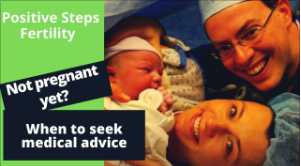What is Pelvic Inflammatory Disease (PID)?
Pelvic inflammatory disease (PID) is a serious condition that affects the female reproductive organs. It is often caused by sexually transmitted infections (STIs) such as chlamydia and gonorrhea, but it can also be caused by other types of bacteria that enter the vagina from other sources. It can lead to pelvic pain, infertility, ectopic pregnancy, and other complications if left untreated.
What causes PID?
PID occurs when bacteria travel from the vagina to the upper parts of the reproductive tract, such as the uterus, fallopian tubes, and ovaries. This can happen during or after sexual intercourse, especially if you have multiple partners or do not use condoms. It can also happen during or after other procedures that involve inserting instruments into the uterus, such as childbirth, abortion, miscarriage, or IUD insertion.
How do you know if you have PID?
Symptoms of PID
Pelvic inflammatory disease can have mild or no symptoms at all, which makes it hard to diagnose and treat. Some of the common signs and symptoms are:
- Pain in the lower abdomen or chronic pelvic pain
- Unusual or foul-smelling vaginal discharge
- Abnormal bleeding from the vagina, such as during or after sex, or between periods
- Pain during sex
- Fever or chills
- Difficulty or pain when urinating
If you have any of these symptoms, you should see a specialist as soon as possible. If you have severe pain, nausea, vomiting, or high fever, you should seek urgent medical care.
How to prevent PID
The best way to prevent this uterine infection is to protect yourself from STIs. You can do this by:
- Having sex only with a partner who has been tested and has negative STI results
- Using latex condoms every time you have sex
- Getting tested for STIs regularly if you are sexually active and under 25 years old
- Seeking treatment for any STIs as soon as possible
- Not douching, which may disrupt the natural balance of bacteria in the vagina.
If you have had PID before, you are at higher risk of PID getting it again. You should follow the above steps to prevent reinfection and follow up with your doctor regularly to monitor your reproductive health.
Can you get pregnant with PID?
The answer to the question “Can you get pregnant with PID?” or “How soon can I get pregnant after treating PID” is not straightforward. It depends on several factors, such as the severity of the infection, the extent of the damage, the treatment received, and the time elapsed since the diagnosis.
According to the Centers for Disease Control and Prevention (CDC), about one in eight women with a history of PID have difficulties getting pregnant. However, this does not mean that pregnancy is impossible for women with this uterine infection.
Some women may conceive naturally, while others may need fertility treatments, such as in vitro fertilization (IVF), to overcome the scarring and blockage of the fallopian tubes. If you have been diagnosed with a uterine tract infection and are wondering about your fertility, talk to a fertility specialist about your options. You may need to undergo some tests to assess the condition of your fallopian tubes and ovaries.
What is the best treatment for pelvic inflammatory disease?
Before we get into the treatment of pelvic inflammatory disease, it is crucial to understand that treatment must be personalized to the individual. Your doctor’s treatment plan will be uniquely based on your circumstances, so take this section as a general outline, not an exhaustive list of the process of treatment.
Generally, the best treatment for pelvic inflammatory disease is to take antibiotics as soon as possible. Antibiotics can cure the infection and prevent severe damage to the reproductive organs. However, they cannot reverse any scarring or damage that has already occurred. Therefore, it is important to seek medical attention if you show any symptoms or if you are at risk of getting infected.
Depending on your condition, you may need to take a combination of antibiotics for 14 days or more. You may also need to have some tests, such as a pelvic exam, an ultrasound, or a laparoscopy, to confirm the diagnosis and check for complications. Your sexual partner should also be treated to avoid reinfection. You should avoid sexual intercourse until the treatment is completed and the symptoms have resolved.
If you have a severe case, an abscess (a collection of pus), or no improvement with oral antibiotics, you may need to be hospitalized and receive intravenous antibiotics. In rare cases, you may need surgery to drain an abscess or remove damaged tissue.
How does PID affect fertility and IVF?
PID is a common cause of infertility in women. The risk of infertility increases with the number and severity of episodes. The infection can also reduce the quality of eggs and embryos, affecting their implantation and development.
PID can affect fertility and in vitro fertilization (IVF) in different ways, depending on the extent of damage to the reproductive organs. Some of the possible scenarios are:
- If only one fallopian tube is blocked or damaged, and the other one is clear, you may still be able to conceive naturally or with intrauterine insemination (IUI), depending on other fertility factors. However, your chances of ectopic pregnancy may be higher.
- If both fallopian tubes are blocked or damaged, you will not be able to conceive naturally or with IUI. Your only option may be IVF, where the eggs are retrieved from the ovaries and fertilized with sperm in a laboratory. The resulting embryos are then transferred to the uterus, bypassing the fallopian tubes.
- If your ovaries are affected, you may have reduced ovarian reserve or diminished ovarian function. This means that you have fewer eggs available or lower-quality eggs. This can affect your response to ovarian stimulation medications and your chances of producing healthy embryos for IVF.
- If your uterus is affected, you may have endometritis or inflammation of the endometrium (the lining of the uterus). This can affect your uterine receptivity or ability to accept an embryo for implantation. This can reduce your chances of pregnancy with IVF.
If you have concerns about how PID might affect your ability to conceive, reach out to a fertility specialist that can best assess your reproductive health and recommend treatment.
Is it possible to have PID without an STD?
PID is usually caused by STIs, such as gonorrhea and chlamydia. However, in rare cases, the infection can occur without having an STD.
According to the Office on Women’s Health, some cases are not related to STIs. Possible non-sexual causes are
- Procedures like dilation and curettage may introduce bacteria into the uterus.
- Rupture of an abscess inside the abdomen that may spread to the fallopian tubes.
- Bacterial vaginosis, which is an imbalance of the normal vaginal flora.
- Intrauterine devices (IUDs), which are long-term birth control devices that may increase the risk of infection.
- Frequent vaginal douching, which may disrupt the natural balance of bacteria in the vagina.
If you think you have symptoms of pelvic inflammatory disease, reach out to a specialist today. If you have had PID in the past and are concerned about future fertility, contact a fertility specialist to get understand your options and your overall fertility journey.
Next Steps You Can Take
At Positive Steps Fertility, we’re here to provide clarity and support as you navigate this journey. If you’re feeling frustrated or unsure about your next steps, let us help.
My goal is to provide women with clear, evidence-based answers so they can make informed decisions. Together, we can identify what’s truly impacting your ability to conceive and develop a plan to address it. You don’t have to go through this alone. Reach out today and take the next positive step forward.
Do you still have questions?
- Learn more about Causes of Infertility in Women
- Sign up for our 20-minute fertility diagnostic test, the Parryscope Test, invented by Dr. Parry.
If you’re ready for answers now, schedule a consultation with our team. Don’t suffer in silence. Find answers. Find peace. Reach out today.




